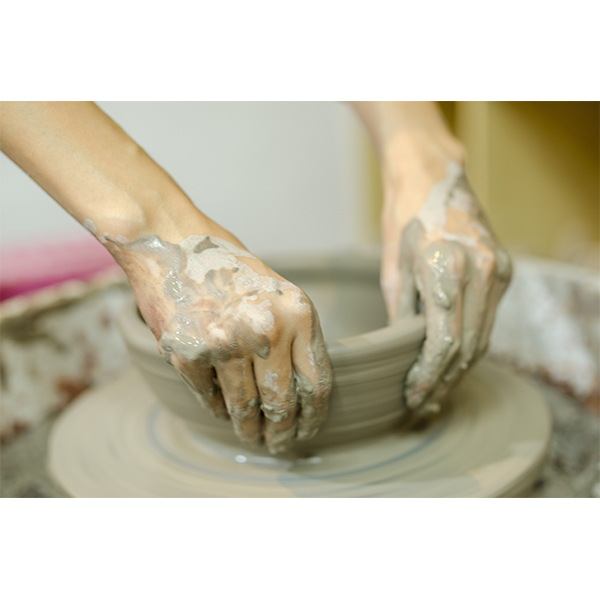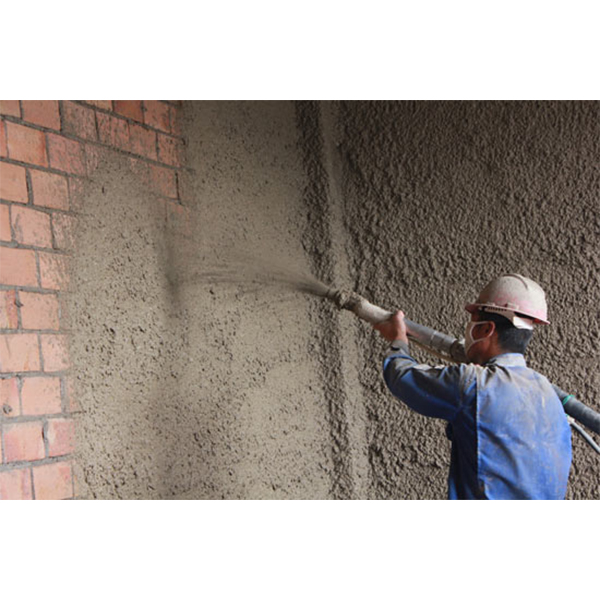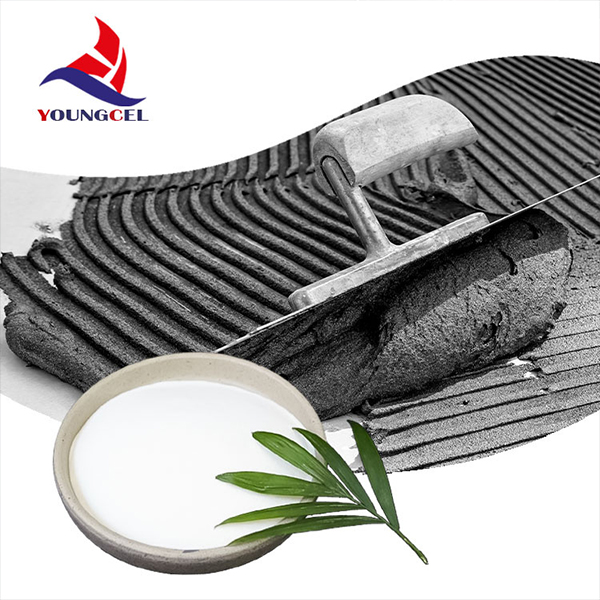The Indispensable Role of MHEC in Modern Ceramic Tile Adhesives
In the rapidly evolving construction industry, the demand for high-performance building materials is ever-increasing. Central to this evolution is the role of advanced chemical additives, particularly in dry-mix mortar formulations like ceramic tile adhesives. Among these, High quality chemical additive MHEC ceramic tile adhesive cellulose Powder 9032-42-2 stands out as a critical component. MHEC, or Methyl Hydroxyethyl Cellulose, is a non-ionic cellulose ether derived from natural cellulose through a series of chemical modifications. Its unique molecular structure, characterized by a balanced substitution of methoxyl and hydroxyethyl groups, provides exceptional water retention, thickening, and rheological properties essential for superior adhesive performance. This section will delve into how MHEC contributes to the workability, bond strength, and durability of tile adhesives, meeting the stringent requirements of modern construction projects, from residential builds to large-scale commercial developments.

The Sophisticated Manufacturing Process of MHEC
The production of High quality chemical additive MHEC ceramic tile adhesive cellulose Powder 9032-42-2 involves a meticulously controlled chemical synthesis process to ensure consistent quality and performance. The primary raw material is highly purified cellulose, typically derived from wood pulp or cotton linters. The manufacturing process commences with the alkalization of cellulose, where cellulose fibers are treated with a strong alkali, such as sodium hydroxide, to swell the cellulose and activate its hydroxyl groups, forming alkali cellulose. This activated cellulose then undergoes etherification in a specialized reactor. During this crucial stage, methyl chloride and ethylene oxide are introduced to react with the alkali cellulose, leading to the substitution of hydroxyl groups with methoxyl and hydroxyethyl groups, respectively. The precise control of reaction conditions, including temperature, pressure, and reactant ratios, dictates the degree of substitution and the final properties of the MHEC.
Following the etherification, the crude MHEC is subjected to a rigorous purification process. This typically involves multiple washing steps with hot water to remove residual salts, unreacted chemicals, and other impurities, ensuring a high purity product. The purified MHEC slurry is then dewatered, dried, and finally ground into a fine powder. This grinding process is critical for achieving the desired particle size distribution, which directly impacts the dissolution rate and performance in dry-mix formulations. Throughout the entire manufacturing chain, strict quality control measures are implemented, adhering to international standards like ISO 9001 for quality management systems. Each batch undergoes comprehensive testing for viscosity, water retention, pH, ash content, and particle size to guarantee its suitability for high-performance applications in ceramic tile adhesives. The precision in this process ensures the consistent quality and reliability of our High quality chemical additive MHEC ceramic tile adhesive cellulose Powder 9032-42-2, making it a preferred choice for formulators.

Key Technical Specifications and Performance Parameters
Understanding the technical specifications of High quality chemical additive MHEC ceramic tile adhesive cellulose Powder 9032-42-2 is crucial for optimizing tile adhesive formulations. The performance of MHEC is primarily defined by its viscosity range, water retention capability, degree of substitution, and particle size distribution. These parameters are meticulously controlled during manufacturing to ensure the additive delivers predictable and superior results in various application conditions. For instance, the viscosity, measured typically in mPa·s (cP) for a 2% solution at 20°C, directly influences the workability and sag resistance of the tile adhesive. Higher viscosity MHEC provides greater thickening and anti-slip properties, while lower viscosity grades can improve flow and leveling.
Water retention, expressed as a percentage, indicates MHEC's ability to hold water within the adhesive mortar, preventing rapid drying and ensuring proper cement hydration, which is vital for bond development. A high water retention rate extends the open time and adjustability of the tile, a critical factor for installers. Furthermore, the particle size and surface treatment influence the dissolution rate and dispersibility of MHEC in dry-mix systems, impacting the homogeneity of the final mortar. Our High quality chemical additive MHEC ceramic tile adhesive cellulose Powder 9032-42-2 undergoes stringent quality checks to meet industry standards such as EN 12004 for adhesive performance and ASTM C1760 for cellulose ethers. Below is a detailed table outlining typical parameters for our high-quality MHEC.
| Property | Unit | Typical Value Range | Test Method (Example) |
|---|---|---|---|
| Viscosity (2% solution, 20°C) | mPa·s (cP) | 30,000 - 80,000 | Brookfield RVT, Spindle 6, 20 rpm |
| Water Retention Rate | % | ≥ 95 (2h, 5mm mortar) | EN 12004-2 Method |
| Particle Size (passing 80 mesh) | % | ≥ 98 | Sieve Analysis |
| pH (1% solution) | - | 6.0 - 8.0 | pH Meter |
| Ash Content | % | ≤ 5.0 | Gravimetric Analysis |
| Bulk Density | g/L | 350 - 550 | Standard Method |

Unlocking Performance: MHEC's Advantages in Tile Adhesives
The incorporation of High quality chemical additive MHEC ceramic tile adhesive cellulose Powder 9032-42-2 into tile adhesive formulations brings a multitude of technical and application advantages. Firstly, its superior water retention capacity significantly extends the open time of the adhesive, allowing installers more time for tile adjustment and alignment, especially in large-format tile installations or in hot, dry climates. This extended open time also ensures that the cement in the adhesive cures properly, leading to optimal hydration and maximum bond strength development between the tile and substrate. Secondly, MHEC acts as an efficient thickener and rheology modifier, imparting excellent workability to the mortar. This translates into smooth application, improved trowelability, and enhanced anti-sag properties, preventing tiles, particularly heavy ones, from slipping down during vertical applications.
Beyond basic rheology, High quality chemical additive MHEC ceramic tile adhesive cellulose Powder 9032-42-2 enhances the overall durability and performance of the bonded system. It contributes to improved adhesion to various substrates, including challenging low-porosity tiles and non-absorbent surfaces. The film-forming properties of MHEC create a more cohesive and flexible mortar, which can better accommodate substrate movement and thermal expansion, reducing the risk of cracking or debonding over time. Furthermore, MHEC improves the freeze-thaw stability of the adhesive, making it suitable for exterior applications in diverse climates. By mitigating water evaporation and ensuring proper cement hydration, MHEC helps achieve higher ultimate bond strength and long-term reliability, directly impacting the longevity and structural integrity of the tiled surface.

Real-World Applications and Industry Trends
The versatility and high performance of High quality chemical additive MHEC ceramic tile adhesive cellulose Powder 9032-42-2 make it an indispensable additive across a broad spectrum of construction applications. While primarily recognized for its role in ceramic tile adhesives, it also finds extensive use in other dry-mix mortars such as self-leveling compounds, skim coats, and renders. In tile adhesives, MHEC is particularly effective for bonding various types of tiles, including ceramic, porcelain, natural stone, and large-format tiles, onto diverse substrates like concrete, cement screeds, and plasterboards. Its rheological properties are critical for ensuring proper bed thickness and coverage, leading to a void-free bond line and preventing future tile pop-ups or failures.
Current industry trends are driving the demand for even higher-performance and more sustainable building materials. This includes a push for low-dust formulations, improved workability in varying climate conditions, and enhanced adhesion to increasingly challenging substrates. Our High quality chemical additive MHEC ceramic tile adhesive cellulose Powder 9032-42-2 is engineered to meet these evolving demands, offering consistent performance that contributes to sustainable construction practices by minimizing material waste and enhancing the lifespan of installations. From large-scale commercial tiling projects to intricate residential renovations, the reliable performance of MHEC ensures professional results, reducing callbacks and increasing overall project efficiency. Our team closely monitors industry advancements to ensure our MHEC grades remain at the forefront of additive technology.

Ensuring Quality and Reliability: Certifications and Trust
As a leading supplier of High quality chemical additive MHEC ceramic tile adhesive cellulose Powder 9032-42-2, our commitment to quality, reliability, and customer satisfaction is paramount. We adhere to the highest international standards in manufacturing and quality management. Our facilities operate under strict ISO 9001 quality management systems, ensuring traceability, consistency, and continuous improvement across all production stages. This commitment is not just a certification; it's an ingrained philosophy that governs every aspect of our operations, from raw material sourcing to final product delivery. Our products undergo rigorous internal testing, often exceeding standard industry requirements, to guarantee their performance in the most demanding applications.
We maintain strong partnerships with reputable raw material suppliers and have a proven track record of serving the construction industry for over two decades. This extensive service tenure has allowed us to accumulate invaluable experience and build a foundation of trust with our global clientele. Our technical support team, comprised of seasoned chemists and application specialists, works closely with clients to optimize their formulations, troubleshoot challenges, and provide tailored solutions. We regularly publish test data and performance comparisons, offering transparency and data-driven insights into the superior capabilities of our High quality chemical additive MHEC ceramic tile adhesive cellulose Powder 9032-42-2. Choosing our MHEC means partnering with a supplier dedicated to delivering not just a product, but a promise of consistent quality and reliable support.

Partnering for Success: Custom Solutions and Support
Recognizing that each customer's needs and specific application challenges are unique, we offer comprehensive technical support and customized solutions for our High quality chemical additive MHEC ceramic tile adhesive cellulose Powder 9032-42-2. Our expert team works collaboratively with clients, providing in-depth analysis of their existing formulations and recommending optimal MHEC grades and dosages to achieve desired performance characteristics. Whether it's enhancing sag resistance for large-format tiles, improving open time in challenging climates, or optimizing cost-efficiency without compromising performance, our application specialists leverage their extensive experience to deliver tangible benefits. We understand that the successful integration of chemical additives requires more than just supplying a product; it demands a deep understanding of the end application and the ability to provide responsive, actionable technical guidance.
Our customer service extends beyond initial purchase, encompassing detailed guidance on storage, handling, and application best practices to maximize the shelf life and effectiveness of High quality chemical additive MHEC ceramic tile adhesive cellulose Powder 9032-42-2. We offer flexible delivery schedules and robust logistics support to ensure timely and efficient supply chain management, minimizing project delays. Our commitment to partnership is reflected in our proactive customer feedback mechanisms, which allow us to continuously refine our product offerings and service delivery based on real-world insights. We believe that true value is created through synergistic relationships, where our expertise in MHEC production complements our clients' innovation in building materials, leading to mutual growth and success in the competitive construction market.

Frequently Asked Questions (FAQ) about MHEC for Tile Adhesives
Q1: What is the primary function of MHEC in ceramic tile adhesives?
A1: The primary functions of High quality chemical additive MHEC ceramic tile adhesive cellulose Powder 9032-42-2 are to provide excellent water retention, improve thickening, enhance workability (trowelability), extend open time, and improve sag resistance. It ensures that the adhesive remains workable for longer, allowing for better bonding and easier installation, especially for large or heavy tiles.
Q2: How does MHEC compare to other cellulose ethers like HPMC in tile adhesives?
A2: While both MHEC and HPMC (Hydroxypropyl Methyl Cellulose) are cellulose ethers used in tile adhesives, High quality chemical additive MHEC ceramic tile adhesive cellulose Powder 9032-42-2 often offers superior sag resistance and improved adhesion in certain formulations due to its specific molecular structure and optimized balance of hydrophilicity and hydrophobicity. MHEC typically provides better anti-slip properties, which is crucial for vertical applications and larger tiles.
Q3: What are the typical dosage recommendations for MHEC in tile adhesives?
A3: The typical dosage of High quality chemical additive MHEC ceramic tile adhesive cellulose Powder 9032-42-2 in ceramic tile adhesives generally ranges from 0.2% to 0.5% by weight of the total dry mix. However, the optimal dosage can vary depending on the specific formulation, desired performance characteristics (e.g., viscosity, open time), type of tile, substrate, and application conditions. We recommend consulting our technical specialists for precise dosage recommendations tailored to your product.
Q4: What is the shelf life and storage conditions for MHEC?
A4: Our High quality chemical additive MHEC ceramic tile adhesive cellulose Powder 9032-42-2 typically has a shelf life of 12-24 months when stored in its original, unopened packaging. It should be stored in a cool, dry place, away from direct sunlight and moisture, to prevent caking and maintain its performance integrity. Proper storage ensures the stability of its chemical and physical properties over time.
Q5: Can MHEC contribute to the sustainability of building materials?
A5: Yes, High quality chemical additive MHEC ceramic tile adhesive cellulose Powder 9032-42-2 is derived from a renewable natural resource (cellulose). Its use enhances the performance and durability of tile adhesives, contributing to the longevity of installations and reducing the need for costly repairs or replacements, thereby minimizing material waste. Its ability to improve workability also leads to more efficient application, reducing labor time and resource consumption on job sites.
Academic References
- Cement and Concrete Research
- Construction and Building Materials
- Journal of Applied Polymer Science
- Polymers for Advanced Technologies
- European Standard EN 12004 (Adhesives for tiles)
-
Rdp that The Revolutionary Polymer Powder Transforming Modern Construction MaterialsNewsAug.11,2025
-
Hpmc Powder that Versatile Additive for Detergents and Personal CareNewsAug.11,2025
-
Hpmc Hydroxypropyl Methylcellulose that Essential Building Material Additive from Shijiazhuang Gaocheng YongfengNewsAug.11,2025
-
Hydroxypropyl Methyl Cellulos Hpmc that Essential for Construction ApplicationsNewsAug.11,2025
-
Mhec Powder that Revolutionizing Construction Chemistry with Cellulose Ether SolutionsNewsAug.11,2025
-
Industri Hpmc that The Global Backbone of Advanced ConstructionNewsAug.11,2025




